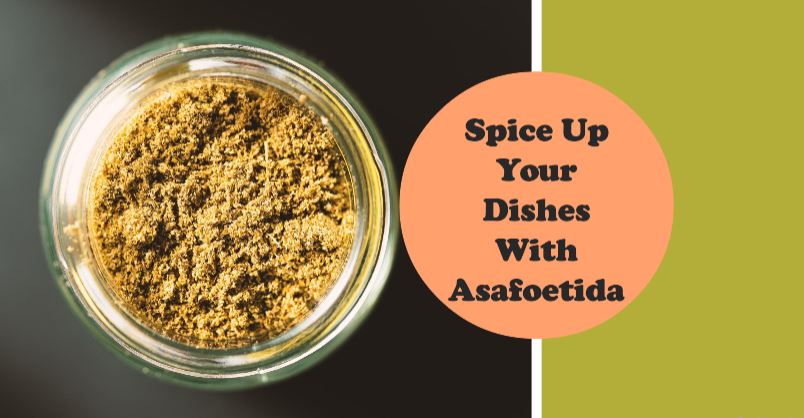Asafoetida, a pungent resin derived from the Ferula plant, holds a crucial place in the Indian kitchen. Commonly known as “hing,” its unique flavor profile enhances a variety of dishes, from lentil curries to vegetable stir-fries. Beyond its distinctive taste, asafoetida also aids in digestion and is a staple in vegetarian and vegan cooking, acting as a flavorful substitute for onion and garlic. Read this blog by the experts of a brand that sells Hing Peda online, mouth freshener online etc.
Tempering (Tadka)
It is commonly used in the tempering process in Indian cooking. In this process, a small amount of asafoetida is heated in oil or ghee along with spices like mustard seeds, cumin seeds, and curry leaves. This aromatic mixture is then added to dishes like dal and sambhar, imparting a distinctive and savoury flavour. The tempering enhances the overall taste, contributing to the rich and aromatic profile of Indian delicacies.
Dal (Lentil) Preparations
It is a key element in Indian cuisine, enhances the flavour of various dal (lentil) preparations. Commonly used in dishes like dal tadka and dal fry, asafoetida contributes a distinctive and savoury note, elevating the taste of the lentils. Its unique aroma and flavor profile make it an essential ingredient, complementing the richness of lentil-based dishes and providing a traditional touch to these popular Indian delicacies.
Vegetable Curries
It is often added to vegetable curries to enhance the overall flavour. Commonly used with vegetables like potatoes, cauliflower, and peas, it adds depth to the overall taste. Often incorporated during the tempering process, asafoetida complements other spices, elevating the richness of the curry. Its distinct aroma and subtle taste make it a key ingredient in creating flavourful and aromatic vegetable dishes.
Rice Dishes
In rice dishes like pulao and biryani, asafoetida is employed during the tempering process to infuse a subtle yet distinctive flavour. Added to hot oil or ghee, it enhances the overall taste of the dish. Asafoetida’s aromatic presence subtly permeates the rice, contributing to the rich and complex flavour profile of these Indian delicacies, elevating them beyond simple grains to flavourful and aromatic culinary delights.
Pickles
It serves as a crucial ingredient in Indian pickles, enhancing their flavour profile. Commonly incorporated into pickled vegetables like mango, lime, and mixed varieties, asafoetida contributes a distinct savoury note. Its potent and pungent nature complements the tanginess of the pickling process, creating a well-balanced and flavourful condiment. The spice is usually added during the pickling preparation, ensuring that it harmonizes with the other spices and ingredients to create a delicious and aromatic pickle.
Chutneys
It enhances the flavour of Indian chutneys, like coconut and tomato chutney. A small amount of this pungent spice, when added during preparation, imparts a distinctive and savoury note to the condiment. Its unique aroma complements the other ingredients, creating a well-balanced and flavourful chutney that can be served as a side dish or accompaniment to various Indian meals, snacks, or dosas (rice pancakes).
Sambar
It is a crucial ingredient in sambar is a South Indian dish. In this lentil-based soup, asafoetida contributes a distinctive and savoury flavour that complements the spices and vegetables. Its addition enhances the overall taste profile of sambar, creating a well-balanced and flavourful culinary experience.
Rasam
In Indian cuisine, it is a crucial component with a spicy and tangy South Indian soup. Added during the cooking process, asafoetida enhances the unique spice blend of the dish, contributing to its distinctive flavor profile. It is often prepared with lentils, tomatoes, and tamarind, is known for its comforting and aromatic qualities. Asafoetida’s pungent note complements the other spices, creating a harmonious and flavorful soup enjoyed with rice or as a standalone soup.
Bread and Lentil Dumplings (Kofta)
It can be added to the batter for lentil dumplings (dal kofta) to improvise their taste. Added to the batter, asafoetida complements other spices, contributing to the rich taste of the dumplings. Typically served in a flavourful curry, dal kofta showcases the spice’s ability to elevate the overall culinary experience, creating a delicious and aromatic dish with a perfect balance of savoury and spicy notes.
Spice Blends (Masalas)
It is a key element in Indian spice blends like garam masala, contributing depth to the overall flavour profile. Its potent and pungent nature enhances the complexity of these mixes, which are widely used in Indian cuisine. Whether in garam masala or other masalas, asafoetida plays a crucial role in creating the rich and aromatic spice blends that characterize many Indian delicacies.
Ending Words
Bear in mind that asafoetida is strong, and a small amount is usually sufficient. It’s utilized sparingly to prevent its robust aroma from dominating the dish. While it possesses a powerful and pungent scent, employing it in modest amounts imparts a distinctive and savoury taste to the culinary preparations.
